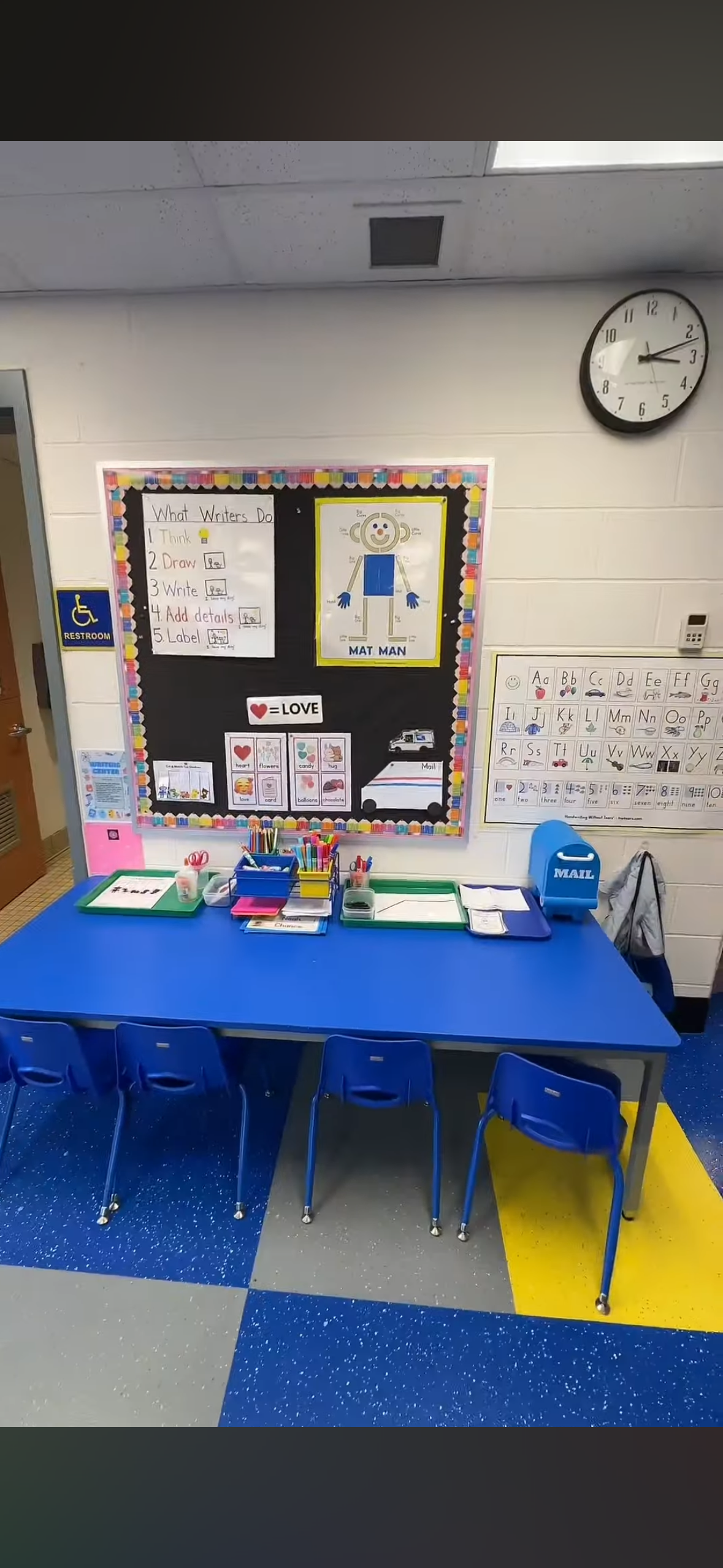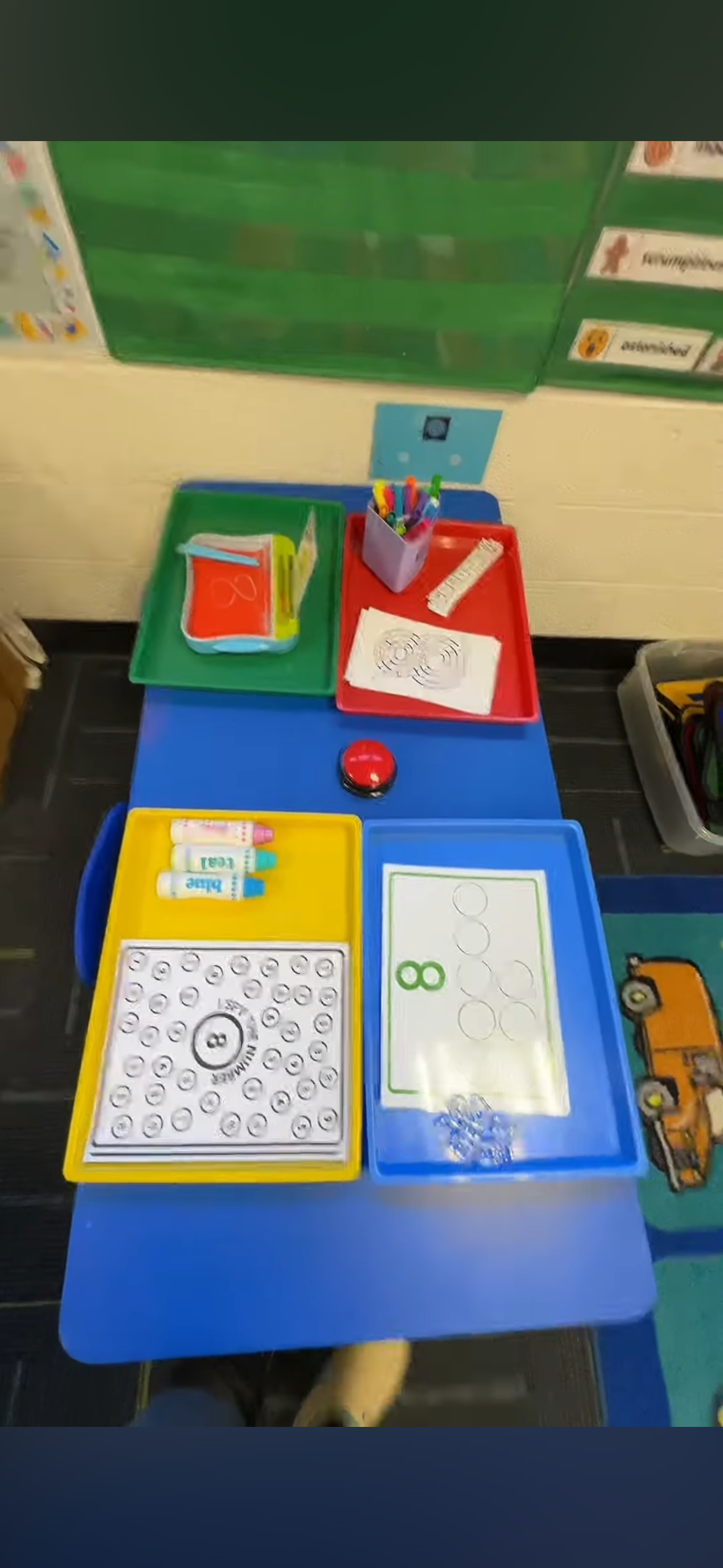Preschool Classroom Centers: How Free Choice Fuels Learning
🌟 Quick Answer:
We use 17 classroom centers with a free-choice approach—no rotations. Children choose centers by placing their Velcro name tag at an available spot. Each center has a set number of spaces. If a center is full, students politely ask for a turn and wait by engaging elsewhere, or use a timer if necessary. Centers stay fresh and engaging by changing every two to three weeks. We occasionally prompt students to try different centers to encourage variety, ensuring a balance between structured guidance and independent exploration.
🎯 Why I Believe in Free Choice Centers
In my classroom, free choice is at the core of how we run our 17 preschool centers. I strongly believe in the power of choice to foster independence, spark genuine engagement, and nurture social-emotional growth in young children.
Here's why it works so well:
Ownership & Engagement: When students choose their own activities, they're naturally motivated, which leads to deeper, more meaningful learning.
Skill Development: Centers encourage decision-making, social negotiation, self-regulation, and problem-solving skills—all critical developmental milestones.
Interest-Based Learning: Allowing kids to explore what excites them builds lifelong learners who associate school with joy and curiosity.
🧩 Our 17 Preschool Centers
Here's the exact list of centers we regularly feature:
🎭 Dramatic Play 🛒
✏️ Writing Center 📎
🍥 Play-Doh Table 🔪
💡 Light Table ✨
🌊 Messy / Sensory Table 🖐️
🧱 Blocks & Building 🏗️
📚 Library / Book Nook 🛋️
🔬 Science / STEAM Center ⚙️
🔤 Letter Table 🚗
🎲 Bin Center 🧩
🧲 Magnet Center 🔡
🎨 Art Easel / Painting Station 🖌️
🪁 Carpet / Large-Group Games 🧘
🖥️ SmartBoard Center 🖱️
😌 Take-a-Break Center 🛋️
✂️ Art Table 🖍️
🤝 Synergize Center 🔧
Each center is intentionally designed, inviting, and regularly updated to maintain excitement and curiosity.
🎟️ Center Name Tags & Spots: A Classroom Management Win
Managing eager students excitedly rushing to their favorite activities can be challenging. To smoothly guide this daily enthusiasm, I've developed a straightforward and effective name-tag system:
Name Tags: Each child has a personalized Velcro name tag.
Center Capacity: Clearly labeled spots at each center indicate the number of children allowed at a time.
Visual Management: Students attach their tag to the center’s sign when entering, providing an easy visual cue for availability.
This system helps maintain order, encourages fairness, and allows children to independently manage their own play choices.
⏳ Using Timers for Fairness & Flexibility
When a center reaches maximum capacity, we teach children a respectful way to handle waiting:
Polite Requests: Students first ask, "May I please have a turn when you're done?" and then engage elsewhere while waiting. The student using the center will inform the waiting peer when their turn is finished.
Timers as Backup: If polite requests aren't effective and waiting continues, we then use sand timers as visual cues, helping reinforce patience and respect.
Varied Experiences: Occasionally, if a student repeatedly chooses the same activity day after day, I gently prompt them to start at a different center with a 10-minute timer. Afterward, they return to their preferred spot. This simple strategy introduces new experiences while respecting student autonomy.
🔄 Keeping Centers Fresh
Stagnant centers can quickly become less appealing, diminishing student engagement. I notice when centers start becoming stale because behaviors change—students become less engaged and behaviors tend to worsen. To prevent boredom, I refresh our centers every two to three weeks by introducing new materials, activities, or thematic changes. Regular refreshes encourage ongoing exploration and discovery, ensuring children remain curious and motivated, resulting in consistently positive behaviors and great learning days.
📌 Gentle Midweek Reminders
Around midweek, I casually remind students to visit specific centers—especially essential ones like our Letter Table—if they haven't yet explored them. This gentle prompting ensures balanced exposure to important learning areas without compromising our commitment to free choice.
📺 Need Inspiration for Your Centers?
If you're looking to dive deeper into the specifics of my 17 centers, I've curated an easy-to-use resource called the Preschool Playlists: Centers Video Hub. Here’s what’s included:
All 17 centers on one handy sheet—exactly as I use them.
Clickable YouTube searches that lead directly to my Preschool Vibes videos, Shorts, and Lives explaining and demonstrating each center.
An editable Google Doc to customize and save your favorite ideas.
How to Use It:
Open the provided PDF and click the Google Doc link.
Make a copy (File → Make a Copy) to personalize.
Click on any center to instantly access Preschool Vibes videos—no scrolling or guessing needed!
🚀 Final Thoughts
Our free-choice preschool centers are intentionally designed to empower students, foster engagement, and support holistic growth. By thoughtfully implementing simple tools like name tags, polite waiting strategies, and timers, and consistently refreshing center materials, we keep the classroom exciting and child-focused.
Happy teaching,
Jess
preschoolvibes.com









